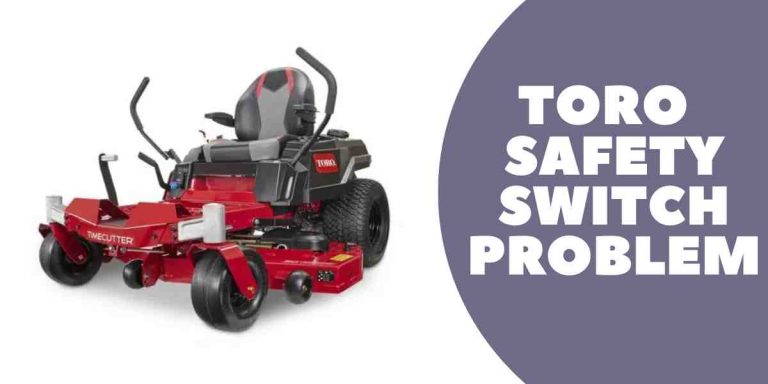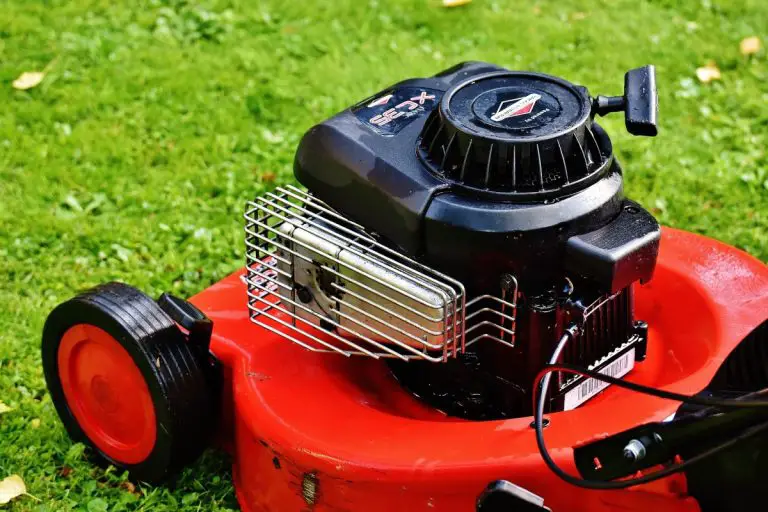Husqvarna Zero Turn Steering Problems: Causes & Fixes
Husqvarna zero turn steering problems can be addressed by identifying and fixing issues with the steering mechanism. If you are experiencing difficulties with the steering of your Husqvarna zero turn mower, it is important to diagnose and resolve the problem to ensure optimal performance.
Steering problems can occur due to various reasons, such as worn-out steering components, improper wheel alignment, or a faulty steering gear.
By inspecting the steering system, including the steering wheel, linkage, and gear, you can identify any damaged or worn-out parts that may need replacement.
Additionally, ensuring proper wheel alignment and maintaining a smooth and level terrain can prevent steering problems.
Regular maintenance, such as lubricating the steering mechanism, will also help prevent any potential issues.
Common Steering Issues
The steering system of a Husqvarna zero turn mower is essential for smooth and precise maneuvering. However, like any complex machinery, it is not immune to common steering issues that can affect its performance.
In this section, we will discuss three common steering problems that you may encounter with your Husqvarna zero turn mower: excessive steering effort, unresponsive steering wheel, and uneven steering.
Excessive Steering Effort
If you find yourself exerting more effort than usual to turn the steering wheel of your Husqvarna zero turn mower, it may be a sign of excessive steering effort.
This can be caused by several factors including:
- Worn or damaged steering components: Over time, the steering components of the mower can wear out or get damaged, leading to increased friction and resistance during steering. It is important to regularly inspect and replace any worn or damaged parts.
- Improper tire pressure: Incorrect tire pressure can affect the overall steering performance. Make sure to check the tire pressure regularly and inflate them to the recommended levels mentioned in the user manual.
- Lack of lubrication: The steering system of your Husqvarna zero turn mower requires proper lubrication to function smoothly. If the steering components are not adequately lubricated, it can result in increased steering effort. Regularly lubricate the necessary parts as mentioned in the user manual.
Steering Wheel Not Responsive
When the steering wheel of your Husqvarna zero turn mower becomes unresponsive, it can greatly hinder your ability to control the mower effectively.
There are a few possible causes for this issue:
- Steering belt issues: A loose or damaged steering belt can cause the steering wheel to become unresponsive. Inspect the steering belt regularly and replace it if necessary.
- Steering linkage problems: The steering linkage connects the steering wheel to the wheels of the mower. If there are any issues with the linkage, such as wear or misalignment, it can result in unresponsive steering. Regularly inspect and maintain the steering linkage.
- Mechanical problems: Other mechanical issues, such as a malfunctioning hydraulic system or a stuck valve, can also cause unresponsive steering. It is important to have these problems diagnosed and repaired by a qualified technician.
Uneven Steering
Uneven steering is another common problem that can affect the performance of your Husqvarna zero turn mower.
Here are a few reasons why you might experience uneven steering:
- Uneven tire pressure: If the tire pressure on one side is significantly different from the other, it can cause the mower to pull to one side. Regularly check and adjust the tire pressure to ensure even steering.
- Worn or damaged steering components: Just like with excessive steering effort, worn or damaged steering components can also lead to uneven steering. Regularly inspect and replace any parts that show signs of wear or damage.
- Improper wheel alignment: If the wheels of the mower are not properly aligned, it can result in uneven steering. Check the wheel alignment and make adjustments as necessary.
Causes And Solutions For Excessive Steering Effort
Excessive steering effort on a Husqvarna zero-turn mower can be frustrating and can greatly affect the overall ease of operation.
If you find yourself struggling to turn the mower, it’s important to identify and address the underlying causes.
In this section, we will explore the common causes of excessive steering effort and provide you with practical solutions to resolve these issues.
Low Hydraulic Oil Level
One of the primary causes of excessive steering effort in a Husqvarna zero-turn mower is a low hydraulic oil level.
The hydraulic oil is responsible for powering the steering system, and if it is below the optimal range, it can result in increased resistance during steering.
To fix this issue, follow these steps:
- Locate the hydraulic oil tank. It is typically positioned near the engine.
- Check the current oil level by removing the dipstick or viewing the oil level indicator on the tank.
- If the oil level is below the recommended range, add hydraulic oil until it reaches the appropriate level. Refer to the mower’s user manual for the specific type of hydraulic oil and the proper procedure for adding it.
- After adding the oil, start the mower and test the steering to ensure the excessive effort has been resolved.
Worn Steering Components
Another common cause of excessive steering effort is worn steering components. Over time, the steering system can experience wear and tear, which can result in increased resistance and effort required to maneuver the mower.
Follow these steps:
- Inspect the steering linkage, including the tie rods and ball joints, for any signs of wear or damage.
- If any components appear worn or damaged, they will need to be replaced. Consult the mower’s user manual or seek professional assistance to ensure proper replacement.
- After replacing the worn steering components, perform a test drive to confirm that the steering effort has been reduced.
Incorrect Tire Pressure
The tire pressure on your Husqvarna zero-turn mower can also contribute to excessive steering effort. When the tires are underinflated or overinflated, it can impact the overall maneuverability and increase the resistance during steering.
Follow these steps to ensure correct tire pressure:
- Locate the valve stem on each tire.
- Using a tire pressure gauge, check the current tire pressure for each tire.
- If the tire pressure is below or above the recommended range, adjust it accordingly using an air compressor or by releasing air.
- Make sure all tires have the same pressure and are within the manufacturer’s recommended range.
- Once the tire pressure is properly adjusted, test the steering to ensure the effort has been alleviated.
Regular maintenance and inspections are key to preventing these issues and ensuring smooth steering performance. Remember to consult the mower’s user manual or seek professional assistance if you encounter any difficulties or have specific questions regarding your mower’s steering system.
How to Adjust Steering on a Husqvarna Riding Mower
Is your Husqvarna riding mower pulling to one side, or does the steering wheel feel loose and unresponsive? Over time, the steering system in your mower can get out of alignment. Luckily, it’s usually a straightforward fix you can do with a few simple tools.
Why Might Your Steering Need Adjustment?
- Normal wear and tear: Constant use may cause parts to loosen or wear down.
- Hitting bumps or obstacles: Impact can knock your steering out of alignment
- Uneven tire pressure: Incorrect tire pressure may cause pulling.
Tools You’ll Need
- Socket wrench set
- Flathead screwdriver
- Tape measure
- Level (optional)
Steps to Adjust Steering
- Park on level ground: Find a flat surface to work on for accurate adjustments.
- Check tire pressure: First, ensure the tire pressure is even on both front wheels. You can find the recommended pressure in your owner’s manual.
- Locate the tie rods: The tie rods connect the steering system to the front wheels. Follow the steering column down to where these rods attach.
- Loosen the lock nuts: On each tie rod, you’ll find locknuts. Use your socket wrench to loosen them.
- Make adjustments:
- Toe-in/Toe-out Alignment: Measure the distance between the front of the tires and then the back of the tires. Ideally, the front measurement should be slightly smaller (about 1/8 – 1/4 inch) than the back for proper toe-in. Turn the tie rod to adjust the distance.
- Loose Steering: You may find a sector gear where the steering column connects. Often there’s an adjustment bolt to tighten this connection. Consult your manual for the correct procedure.
- Re-tighten lock nuts: Once adjustments are made, secure the locknuts.
- Test drive: Take the mower for a short test drive in a straight line. Make further adjustments as needed.
Causes And Solutions For Steering Wheel Not Responsive
Dealing with a Husqvarna zero turn steering problem can be frustrating, especially when your steering wheel becomes unresponsive. When this happens, it’s important to identify the root cause and find the appropriate solution.
Here, we will explore three common causes of a non-responsive steering wheel and provide you with practical solutions to get your Husqvarna zero turn mower back on track.
Loose or Damaged Steering Belt
A loose or damaged steering belt can greatly affect the responsiveness of your mower’s steering wheel. If the belt is loose, it may slip or fail to transmit the necessary power to the steering components.
On the other hand, a damaged belt may have frayed edges or breaks, reducing its effectiveness. In either case, the steering belt needs immediate attention and replacement.
To troubleshoot the issue, here’s what you can do:
- Inspect the steering belt for any signs of damage, such as fraying or breakage.
- If the belt is loose, adjust the tension by following the manufacturer’s guidelines. This usually involves tightening the belt or adjusting the position of the idler pulley.
- If the belt is damaged, replace it with a new one of the appropriate size and specifications.
Faulty Steering Control Valve
The steering control valve is a vital component responsible for directing hydraulic fluid and facilitating smooth steering.
When the control valve malfunctions, it can result in an unresponsive steering wheel. This can happen due to wear and tear or a clogged valve.
To address the issue, try the following steps:
- Inspect the steering control valve for any visible damage or signs of wear and tear.
- Check if the valve is clogged with debris or dirt. If so, clean it thoroughly or consider replacing it if cleaning doesn’t resolve the issue.
- In case of excessive wear and tear or damage, it’s best to replace the steering control valve with a new one from an authorized Husqvarna dealer.
Malfunctioning Steering Shaft
The steering shaft connects the steering wheel to the steering mechanism, allowing you to control the mower’s direction. If the steering shaft becomes worn or damaged, it can lead to an unresponsive steering wheel.
Here’s what you can do to resolve this issue:
- Inspect the steering shaft for any visible damage or excessive wear.
- If the shaft is damaged or worn beyond repair, it should be replaced with a new one.
- Ensure the new steering shaft is properly aligned and securely fastened to the steering mechanism.
Causes And Solutions For Uneven Steering
Uneven steering on your Husqvarna zero-turn mower can be a frustrating and potentially dangerous problem. Fortunately, there are several common causes for this issue, and most of them can be easily resolved.
In this article, we will explore three common causes of uneven steering and provide solutions to help you get your mower back on track.
Uneven Tire Pressure
One of the most common causes of uneven steering on a Husqvarna zero-turn mower is uneven tire pressure. This can occur when the tires are not properly inflated or if there is a leak in one or more of the tires.
Uneven tire pressure can lead to one side of the mower pulling more than the other, resulting in uneven steering.
Solution:
- Check the tire pressure on all four tires using a tire gauge.
- If the pressure is uneven, adjust it accordingly following the manufacturer’s recommendations.
- If you notice a leak, repair or replace the affected tire as soon as possible.
Bent or Damaged Steering Linkage
Another common cause of uneven steering is a bent or damaged steering linkage. The steering linkage connects the steering wheel to the front wheels and allows for seamless maneuverability. If this linkage becomes bent or damaged, it can result in uneven steering performance.
Solution:
- Inspect the steering linkage for any signs of bending or damage.
- If you notice any issues, replace the damaged linkage with a new one.
- Regularly lubricate the steering linkage to prevent wear and tear.
Improper Wheel Alignment
Improper wheel alignment is another potential cause of uneven steering. If the wheels on your Husqvarna zero-turn mower are not aligned correctly, it can lead to one side of the mower pulling more than the other, resulting in uneven steering.
Solution:
- Check the wheel alignment using a straight edge or a string.
- Adjust the alignment by loosening the bolts that secure the front wheels and moving them until they are aligned properly.
- Tighten the bolts securely to maintain the alignment.
Maintenance Tips For Proper Steering Function
Proper maintenance is essential to ensure that your Husqvarna zero-turn mower operates smoothly and efficiently.
One crucial aspect you should not overlook is the steering function. Steering problems can hamper the mower’s performance and make it difficult to maneuver around your yard.
To avoid these issues, follow these maintenance tips to ensure your Husqvarna zero-turn mower’s steering function remains in top shape.
Regularly Check Hydraulic Oil Level
One primary cause of steering problems in zero-turn mowers is low or inadequate hydraulic oil level. The hydraulic system plays a critical role in powering the steering function, allowing for precise control of the mower’s movements.
Consistently monitoring the hydraulic oil level is crucial to prevent any disruptions in the steering mechanism.
To check the hydraulic oil level in your Husqvarna zero-turn mower, follow these simple steps:
- Park the mower on a flat surface and engage the parking brake.
- Locate the hydraulic oil reservoir, usually located near the engine or driver’s seat.
- Remove the cap from the reservoir and wipe the dipstick clean with a cloth.
- Insert the dipstick back into the reservoir and then remove it again.
- Check the oil level indicated on the dipstick. It should fall within the recommended range, which is typically marked by lines or indicators.
- If the oil level is low, carefully add the recommended hydraulic oil until it reaches the proper level.
- Securely reattach the cap, ensuring it is tightly sealed.
Inspect Steering Components for Wear and Tear
Over time, the steering components of your Husqvarna zero-turn mower may experience wear and tear, leading to steering problems.
It is crucial to conduct regular inspections to identify any signs of damage or excessive wear.
During your inspections, pay close attention to the following steering components:
- Steering wheel: Check for any looseness or wobbling.
- Steering linkages: Look for signs of wear, such as rust, cracks, or excessive movement.
- Bolts and fasteners: Ensure they are securely tightened.
If you notice any abnormality or damage, it is recommended to consult the user manual or contact a professional for assistance with repairs or replacements.
Frequently Asked Questions
Why Is My Husqvarna Riding Mower Hard To Steer?
Your Husqvarna riding mower may be hard to steer due to several reasons, such as worn-out steering parts, low tire pressure, or an improperly adjusted steering system. Regular maintenance and addressing these issues promptly can help improve the steering performance of your mower.
How Do You Adjust The Steering On A Husqvarna Zero Turn Lawn Mower?
To adjust the steering on a Husqvarna zero turn lawn mower, follow these steps: 1. Locate the steering adjustment controls, usually positioned near the operator’s seat. 2. Use the adjustment controls to change the steering sensitivity or speed. 3. Test the adjustments while operating the mower to ensure they meet your desired specifications.
What Does Steering Damper Do For Zero-Turn?
A steering damper on a zero-turn helps stabilize the steering system, reducing jerky motions and vibrations. It enhances control and prevents sudden movements for smoother and more precise maneuverability.
Why Does My Zero Turn Mower Shut Off When Arms Are Engaged?
Your zero turn mower shuts off when arms are engaged to ensure safety. This feature is called the operator presence control system. When you release the arms, the engine will turn off to prevent accidents and injury. Make sure both arms are securely held to keep the mower running.
Conclusion
While zero-turn mowers, such as the Husqvarna, offer efficient and precise mowing experience, steering problems can arise. Identifying and addressing these issues promptly is crucial in maintaining the performance of your mower.
Regular maintenance, proper operation techniques, and seeking professional assistance when needed are important steps to overcome any potential steering problems.
Remember to stay vigilant and keep your mower in top condition to ensure a seamless mowing experience. Happy mowing!




